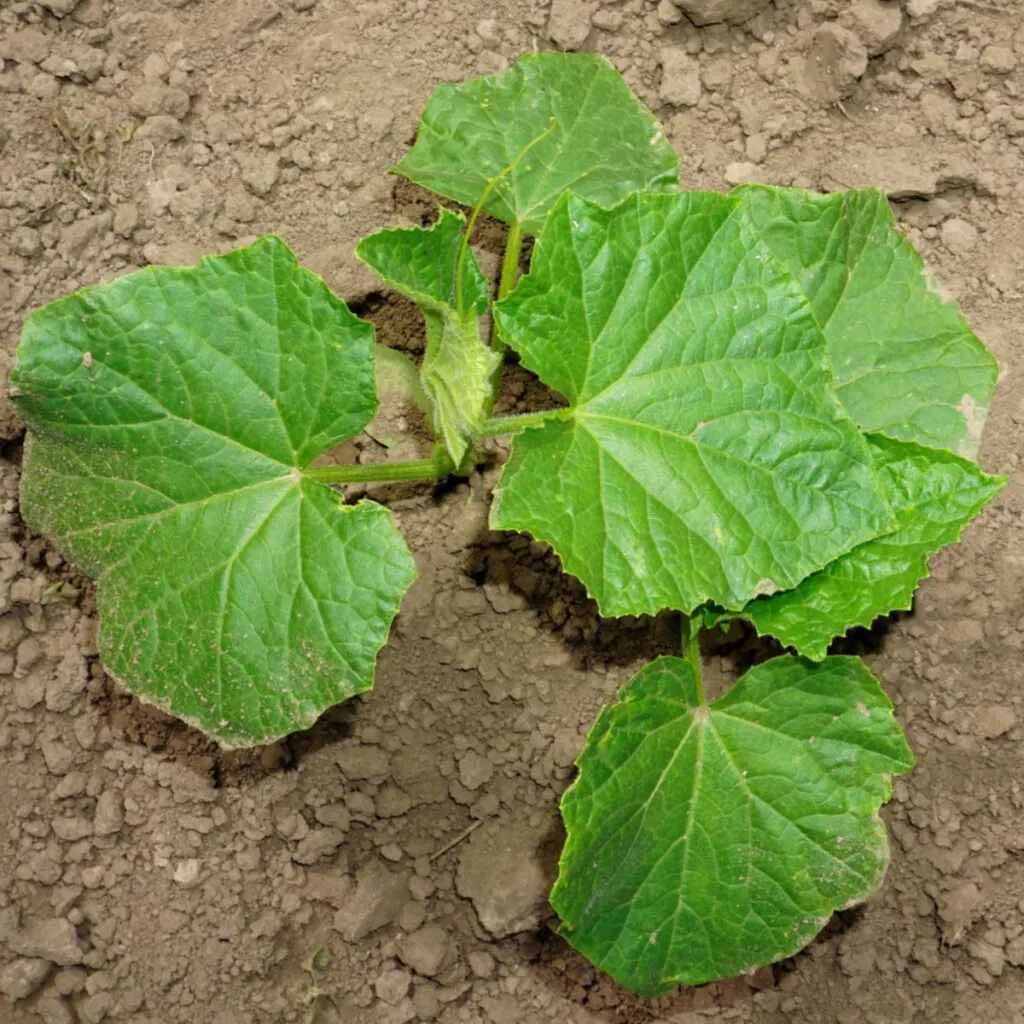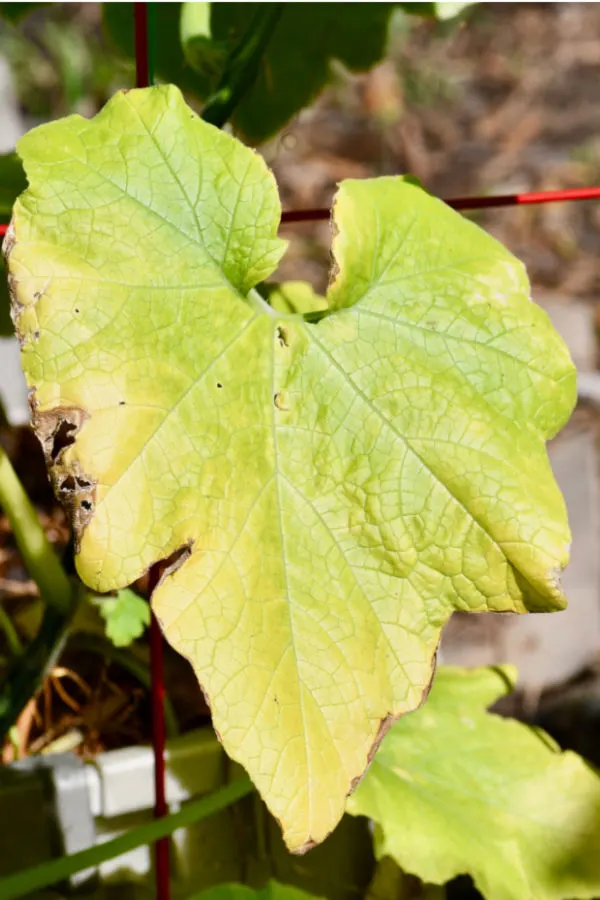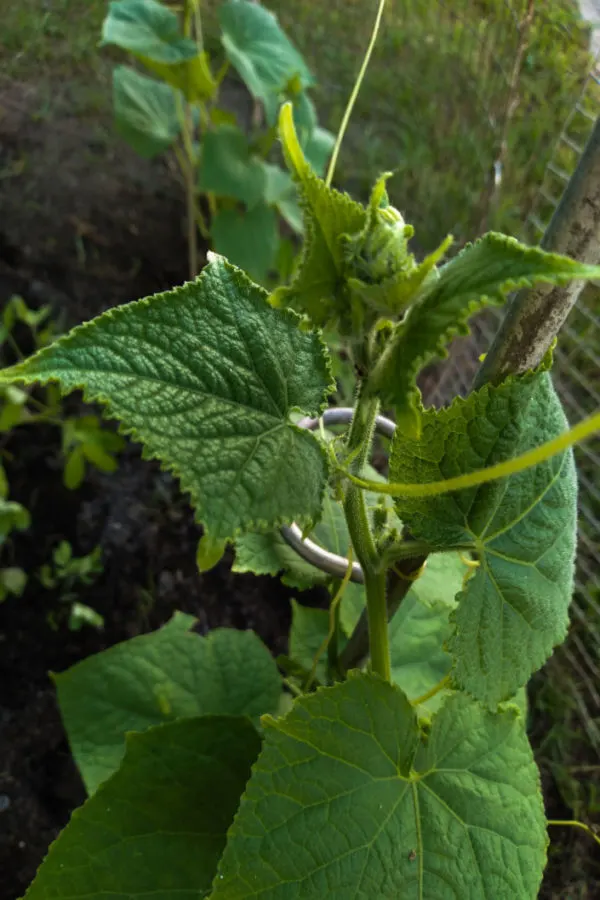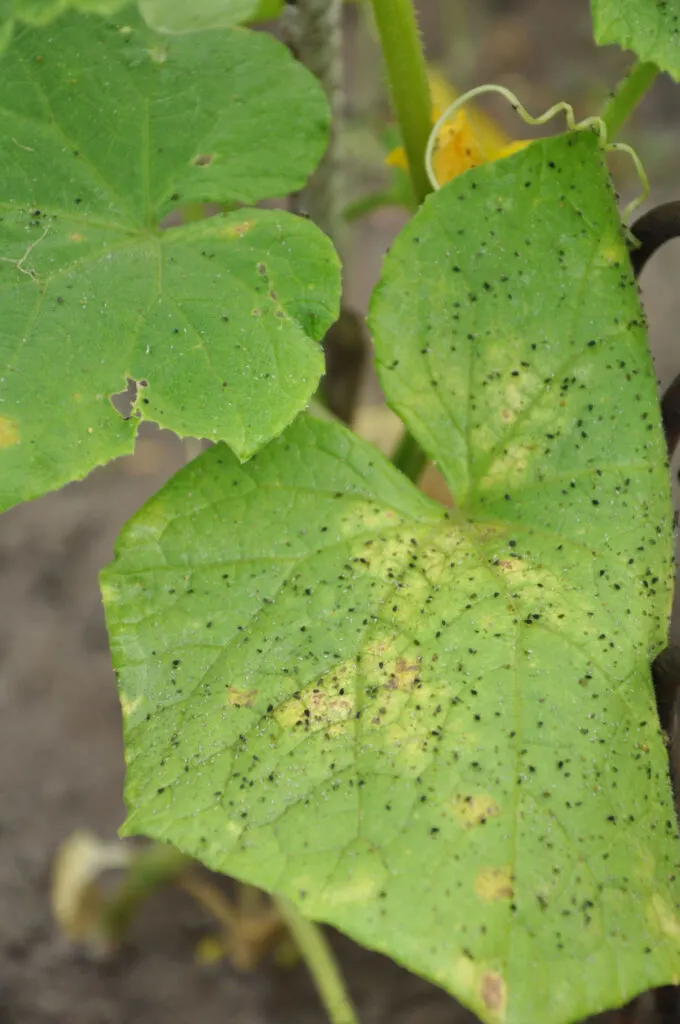Looking for a few tricks and tips to help get your struggling cucumber plants to start growing better quickly?
There is nothing more disheartening to a gardener than watching their vegetable plants sit in the ground and fail to take off in the spring and early summer months. When plants struggle to grow, it creates a long list of both short and long term issues.
Not only does a delay in early growth lengthen the time it takes to eventually produce a harvest, it also puts plants at a higher risk of disease and pest issues as well. Unfortunately, that risk is especially high for cucumber plants that struggle to establish early in the season because their young foliage and stems are extremely tender and vulnerable to attack.

Cucumber plants are highly susceptible to mold, mildew and blight. In addition, they also happen to have a fair amount of pests that love to dine on their foliage. Aphids, whiteflies and cucumber beetles can all pose big issues for cucumbers – especially when the plants are weak.
The simple truth is, weak plants become an easy target for disease and pests. And the longer your cucumber plants sit stagnant – the more likely harm will come their way. With that in mind, here is a look at how to get your struggling plants powered up and back on the fast track to a great harvest!
How To Help Struggling Cucumber Plants Grow Faster – 3 Simple Secrets To Success!
In most cases, when cucumbers fail to start growing early in the season, the problem can be traced to one or more of these three issues:
- Too Little / Too Much Water
- A Lack Of Nutrients
- Early Pest / Disease Issues
The good news is that all of the above can almost always be remedied quickly – and in the process, get your cucumbers to take off and develop a strong canopy of stems and foliage. Here is an in-depth look at each of the issues mentioned above, and how to fix them in short order to get your cucumber plants growing.
Too Little / Too Much Water – How To Help Struggling Cucumber Plants Grow Faster!
If there is one issue that is bigger than all in causing cucumbers to stall early on it is the amount of water they are receiving. But more times than not, it is that they get too much water more than not enough.

Make no mistake about it, cucumbers need water to survive and thrive. The stems, roots and leaves of cucumber plants consist of mainly water. And the fruits the plant produces contain an even higher percentage. In fact, cucumber fruit consists of nearly 96% water!
Without enough water, your plants will simply sit and slowly die off. But when the roots of a cucumber plant gets or sits in too much water, the plant will struggle to grow as well. Especially early on in the growing season.
As the roots of a cucumber plant become overly saturated, they swell. When this happens, the swelling makes them unable to take in the nutrients they need from the soil. And without energy, the plant’s growing pattern stalls.
Plants with swollen roots will simply sit stagnant in the soil. Unable to absorb power, the foliage of over-watered plants will often begin to yellow due to a lack of nutrition. In severe cases, the foliage will start to brown off and eventually, if not corrected, die.
Making matters worse, when many gardeners see the yellowing of leaves and slow growth, they think the plant needs water. Of course, unfortunately, that only worsens the issue.
Keeping Cucumber Plants Properly Hydrated – How To Help Struggling Cucumber Plants Grow Faster!
So how much water is enough for young cucumber plants? Watering needs can vary depending on the growing situation. Cucumbers growing in containers will need more frequent watering than those growing directly in the ground.

As a good rule of thumb, overall, small cucumber plants should be getting about one inch of water per week. That translates to about one gallon of water per plant each week for young cucumber plants – whether through rainfall, or by hand watering.
What is most important about knowing when to water or not is the moisture level beneath the soil right around the roots of your plant. Quite often the soil surface can be dry, but the root area still is overly moist. If this is the case, watering at this point will only saturate the roots more.
Always check the moisture level down in the soil level before watering. You can do this with your finger, a wooden skewer, or an inexpensive soil probe moisture meter. If there is still sufficient moisture present, it is important to not water! Affiliate Product Link: Soil Moisture Meter
Fertilizing – How To Help Struggling Cucumber Plants Grow Faster!
Cucumbers need nutrients early on to grow strong, healthy vines, stems and foliage. The more foliage a cucumber plant can grow, the more it can use the sun’s energy through photosynthesis to create even more power to produce a strong plant and eventually, a big crop of cucumbers!

Typically, as cucumber plants mature, you want to feed them with a fertilizer that has a bit more phosphorous than nitrogen. Phosphorous is key in forming blooms, while nitrogen fuels plant and foliage growth.
But if your plants are struggling early on, this is where a more nitrogen in your fertilizer can really help to jump start your cucumber plants to fast foliage growth. Look for a fertilizer that contains either equal, or even better, higher amounts of nitrogen.
A 10-10-10 N-P-K (Nitrogen, Phosphorous, Potassium) fertilizer will work well. And if your plants are really struggling, you can even give them a boost of Urea, which is an organic fertilizer of pure nitrogen that will get plants growing in a flash. Product Affiliate Link : Urea Fertilizer 46-0-0 Plant Food for Indoor/Outdoor Flowers & Organic Gardens
You will only want to give your cucumbers this higher dose of nitrogen once or twice about 10 days apart. This will be enough to power them up and get them going.
It’s important that once your plants have begun to take off to switch to a fertilizer with a bit less nitrogen, but with more phosphorous and potassium. This will help the plant then refocus energy on creating fruit, and not just strong vines and leaves.
Early Pest / Disease Issues – How To Help Struggling Cucumber Plants Grow Faster!
Another major reason cucumbers often fail to take off after planting is pest attacks. And sometimes, those pests are so small, you don’t even know they are on the plant until it’s too late!
If your plants are struggling early, it is important to check the undersides of leaves for aphids and whiteflies. These are two pests that can stunt the early growth of cucumber plants in a flash. These pests like to lay their eggs and stay under leaves to do their damage.

Unfortunately, aphids also carry with them lots of disease that can also then transfer to your plants. If you notice leaf damage, curling leaves, or the tips of your plants browning, check the leaves underneath to make sure they are not present.
Taking care of insect issues early on can keep your plants healthy, and get them on the path to growing. See: How To Keep Aphids Out Of Your Garden – Without Harsh Chemicals
Here is to revving up your cucumber plants to get them growing strong. And – to having a great cucumber harvest this year as well!
Follow Our Facebook Page For Even More Great Tips! Simple Garden Life Facebook Page
Simple Garden Life is a website dedicated to keeping gardening fun, simple and enjoyable! We publish two new articles each week along with a new garden podcast episode every two weeks. This article may contain affiliate links.
